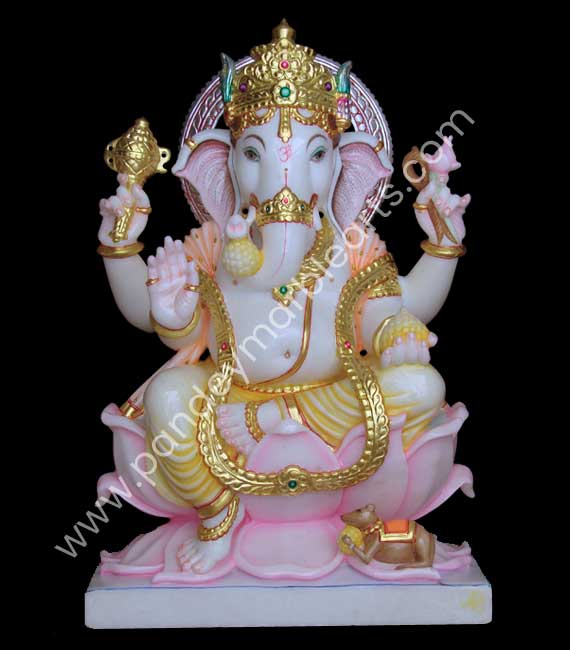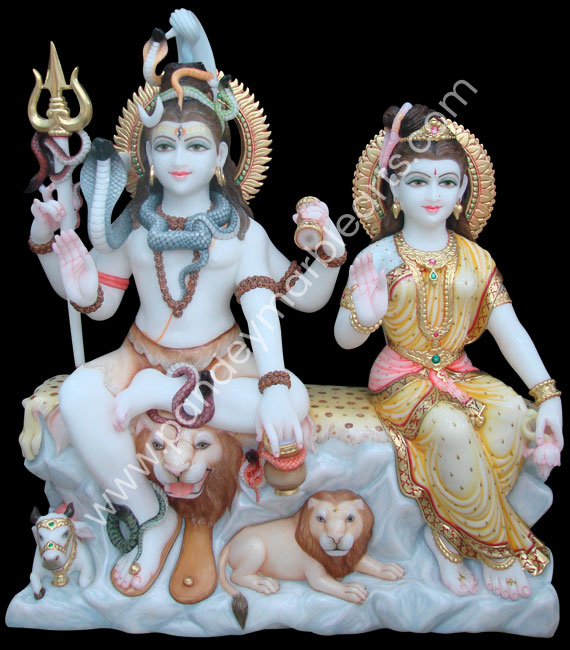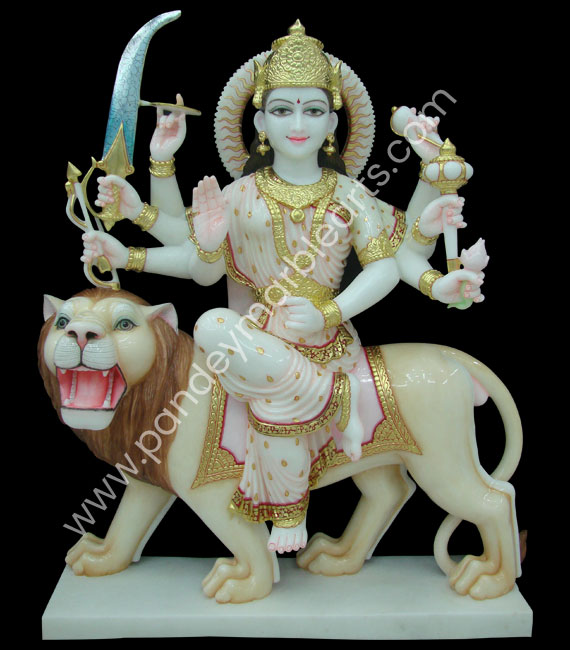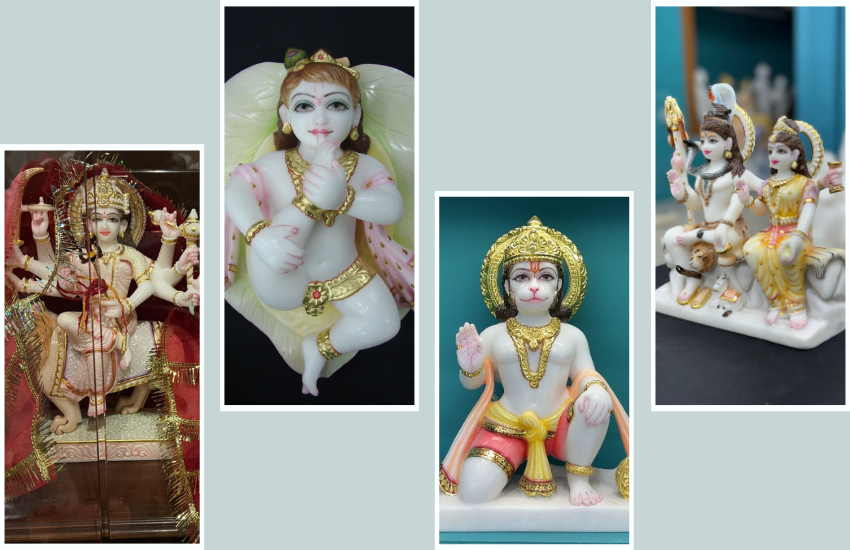In Hindu homes across the world, there is a quiet, sacred place called the pooja room, where families sit, pray, and feel close to the divine presence of God, reflected in idols and pictures. Space brings peace, strength, and hope in our daily lives.
For many of us, starting the day with folded hands in front of deities feels like a divine blessing. A pooja room feels complete only when it holds the god idols we believe in and pray to. But have you ever wondered which idols are considered essential for every home temple? Are you missing a powerful deity that could bring balance and blessings to your home?
If that’s the case, we have curated a list of 10 must-have Hindu god idols that every pooja room should have, and we will explain the significance of each statue in your home temple.
10 God Idols Every Hindu Must Have in Their Home Temple
Keeping the right god murti in your pooja room brings positivity and protects your family. Each idol has its own meaning and energy. Here are 10 essential god idols that every Hindu must have in their home temple:
1. Lord Ganesha Moorti
Lord Ganesha is worshipped before any other deity, according to Sanatan Dharma. He removes obstacles and brings us good luck. His idol is significant while beginning new work.

A seated Ganesha marble murti with one leg down and the other folded is ideal for home temples. His large ears indicate we need to listen more, and his peaceful face gives peace to the mind. Having a Ganesha idol in the pooja room ensures success and eliminates obstacles in life.
2. Laxmi Narayan Idol
Laxmi Narayan means Lord Vishnu with Goddess Lakshmi. Together, they bring wealth, protection, and harmony in life. Lord Vishnu guards the world, and Goddess Lakshmi gives wealth and prosperity.
The Laxmi Narayan statue is typically depicted standing or sitting side by side, with Vishnu grasping his symbols and Lakshmi holding a lotus. Placing this Laxmi Narayan murti in the pooja room creates harmony, growth, and blessings in the family.
3. Shiva Parvati with Family
Lord Shiva is the god of peace and transformation. Goddess Parvati is the motherly energy. Both, along with their sons Lord Ganesha and Kartikeya, and daughter Ashokasundari, constitute the divine family.

This statue is referred to as Shiv Parivar. It depicts harmony, love, and equilibrium in family life. Lord Shiva is depicted in a tranquil posture, Parvati with a smiling face, Ganesha with blessings, and Kartikeya with a spear. Keeping Shiv Parivar in the pooja room brings peace, family bonding, and spiritual strength.
4. Ram Darbar
Ram Darbar features Lord Rama, Goddess Sita, Lakshman, and Hanuman together. The idol represents the ideal family, devotion, and ethics. Lord Rama is sitting with a bow, Maa Sita at his left side, Lakshman devotedly standing on the right side, and Hanuman in prayer at their feet.
Traditionally, a Ram Darbar includes four main deities. But many devotees also choose to include Bharat and Shatrughan, making the Darbar feel more spiritually complete.
Just like the magnificent Ram Darbar sculpted by Pandey Moorti Bhandar for the prestigious Ram Mandir in Ayodhya, many families now prefer to include all six figures for their symbolic and spiritual richness.
5. Radha Krishna Idol
Radha Krishna is an emblem of pure love, devotion, and bliss. Lord Krishna playing the flute with Radha accompanying him is an idol you will find everywhere. Their idol fills the house with happiness, peace, and spirituality.
Krishna’s flute depicts the music of the soul, and Radha’s love depicts devotion. Having a marble Radha Krishna Jugal Jodi moorti/ISCON Radha Krishna Deity in the pooja room brings harmony among relationships and infuses positivity and beauty into the home.
6. Goddess Durga
Goddess Durga represents strength and protection. She is depicted riding over a lion, with weapons in her multiple arms. Her calm yet robust face erases fear and instills courage. She safeguards the house against evil influences.

A Durga idol will suit those seeking inner strength and protection for their family. Praying to her on Navratri is extremely special, but her presence is a boon at all times.
7. Goddess Saraswati
Goddess Saraswati is the deity of knowledge, music, and wisdom. She sits on a white lotus or sometimes riding on a swan, but is often depicted holding a veena, a book, and prayer beads. Her idol is peaceful and calm.
Students and artists revere her to be concentrated and successful. Placing the Saraswati Mata Idol in the pooja room promotes knowledge, creativity, and eloquent speech. A white or ivory marble statue of Saraswati is said to be ideal.
8. Laddu Gopal Ji
Ladoo Gopal is the bal swaroop of Lord Krishna. He is depicted as a little boy sitting or crawling, holding a ladoo. His idol creates joy, purity, and divine love in the house.
Many people treat him like a baby, feeding him, dressing him, and taking care of him with affection. Having a marble Laddu Gopal Idol in your pooja room brings happiness to your house and makes you feel connected to God lovingly.
9. Lord Hanuman
Lord Hanuman represents strength, faithfulness, and bravery. His idol safeguards the house from fear and negativity. He is depicted in a standing position with hands clasped, or holding a mountain in one hand and a mace in the other, revealing his strength and loyalty to Lord Rama.
His worship assists in overcoming problems, developing confidence, and concentrating. The Hanuman Ji Statue in the home shrine repels bad thoughts and generates powerful energy.
10. Kuldevi, Kuldevta & Regional Deities
Every family holds a special connection with their Kuldevi or Kuldevta, the ancestral deity believed to protect and guide generations. In many homes, especially across Maharashtra, Gujarat, Rajasthan, and South India, having a murti of their family deity in the pooja room symbolizes lineage, faith, and protection.
Likewise, followers of Jainism often include moortis of Lord Mahavira and Parasnath, while Sikh households may place an image of Guru Nanak Dev Ji as a mark of daily remembrance and spiritual grounding.
Why Is It Important to Keep God Idols in Your Home Temple?
Having God statues in your home temple fills your space with peace, faith, and positive energy. These moortis remind us that we must remain grounded, kind, and tackle life with courage and patience. When we pray before idols, we feel extremely close to the divine.
Each idol is meant to signify something. Lord Ganesha is prayed to for eliminating obstacles, Lakshmi for prosperity and good fortune, Shiva for peace of mind, and so on. Having them as a marble murti swaroop in the house helps create balance in life. Even when times get tough, sitting silently before the gods’ murtis can provide strength, solace, and clarity. That’s why many families take great care in choosing the right idols and placing them with love and devotion.
But as important as the idols themselves is the temple in which they are set. A good, clean, and lovely home mandir creates a divine environment for worship. And in many homes across India, white makrana marble temples have become the first choice, not just for their beauty, but for their rich spiritual ambiance.
Marble has a natural calmness. Its even surface, cool touch, and soft glimmer give the pooja room a clean, fresh, and holy appearance. Unlike wood or plastic, marble carries a timeless quality. It doesn’t fade or weaken over time. It remains strong, just like your faith.
Nowadays, many families prefer customized marble temples made to match their home and beliefs. These modular marble mandirs can be designed in different sizes, shapes, and styles. Many include small shelves for murtis, spaces for diya and incense, and even backlit panels for a soft glow. Some even have traditional elements like jali (carved grills) or peacocks, kalash, and floral borders to make it feel more connected to their culture.
What is the Right Way to Place Hindu God Moortis in Your Home Temple?
Placing Hindu god murtis (idols) in the right way in your pooja room is essential to receive their full positivity and blessings. The first rule is to keep the idols in a clean and quiet space, preferably in the north-east or east corner of your house. This direction is considered holy and full of divine energy.
Secondly, the idols should not face each other or the wall directly. The back of the idols should not be visible. Try to keep them a little away from the wall to allow proper airflow. Avoid placing broken or chipped murtis in the temple.
Most importantly, place each murti with devotion and respect. More than rules, it is your faith and intention that fill the space with peace, purity, and spiritual energy.
How to Keep Your God Statues Spiritually and Physically Clean?
Maintaining god statues is a sign of love, respect, and dedication. Keeping an idol clean ensures that the spiritual energy within your pooja room is maintained. Dust and dirt must be prevented from settling on murtis, particularly if made of marble.
To clean marble idols at home, gently wipe them daily with a soft, dry cloth. Once every week, clean them with a cloth wet with plain water or rose water and avoid using chemicals or harsh soap. If needed, you can use a gentle fabric cleanser in very small amounts, but rinse thoroughly to avoid residue. For detailed areas, clean with a soft brush or an earbud to remove dust. Dry the moorti completely after cleaning.
While marble is considered the purest and most sacred material for Hindu god moortis, it can lose its shine or color over the years. The aura and divinity can fade if not maintained properly. This is why repolishing and repainting marble statues becomes necessary to have the moorti shining and radiating life.
For that, you can rely on professional service from Pandey Moorti Bhandar. With devotion and care, they assist in bringing your idols back to their original glory, maintaining the spiritual ambience alive within your home temple for years to come.
Conclusion
A pooja room is complete when it holds the idols that reflect our faith and bring peace to the home. Every murti, each with its significance, provides an atmosphere where prayers are heard and the heart feels calm. Choosing the right deities and placing them with care helps create a space that feels truly sacred.
If you are looking for divine makrana marble god idols for your pooja room, Pandey Moorti Bhandar has been a trusted name since the 1960s.
Their true craftsmanship was honored when they were chosen to make the Ram Darbar for the Ayodhya Ram Mandir, as well as more than 30 other marble murtis for the temple. Their work reflects not only craftsmanship, but dedication passed down through generation to generation.
FAQs
Which Idols are Good to Keep at Home?
Idols of Lord Ganesha, Lakshmi, Durga, Shiva-Parvati, Ram Darbar, Radha Krishna, and Hanuman are commonly kept at home for peace, blessings, and protection.
What are the 7 Items on a Puja Tray?
A simple puja thali typically has a diya (lamp), incense sticks, flowers, kumkum, rice grains (akshat), holy water, and prasad for offering to the gods.
What Not to Keep in a Pooja Room?
Do not keep broken idols, torn photographs, outdated calendars, or things that have a connection with violence or negativity. Keep it clean, calm, and spiritually charged.
How to Arrange God Idols in a Pooja Room?
Keep idols either east, north, or north-east facing, at eye level. Don’t set one idol behind another. Keep space between each murti for balance and respect.
Can We Keep Multiple God Idols at Home?
Yes, you can keep multiple idols at home. Each deity brings its own blessings, and having them together adds more spiritual energy to your pooja space.

